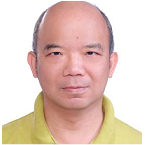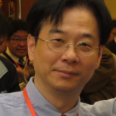Selected Papers from TIKI IEEE ICICE 2019&ICASI 2020
A special issue of Applied Sciences (ISSN 2076-3417).
Deadline for manuscript submissions: closed (31 December 2021) | Viewed by 7552
Special Issue Editors
Interests: semiconductor physics; optoelectronic devices; nanotechnology
Special Issues, Collections and Topics in MDPI journals
Interests: optical and electronic devices; semi-conductive materials; nanotechnology
Special Issues, Collections and Topics in MDPI journals
Interests: microsystem design; nanotechnology
Special Issues, Collections and Topics in MDPI journals
Interests: nano-optoelectronics; photo detector; nanomaterials
Special Issues, Collections and Topics in MDPI journals
Interests: solar cells; nano-material phosphor; sensor
Special Issues, Collections and Topics in MDPI journals
Special Issue Information
Dear Colleagues,
The 2019 International Conference on Innovation, Communication and Engineering (TIKI ICICE 2019, http://2019.icice.net/) will be held in Zhengzhou (鄭州), Henan Province, China on October 25–30, 2019. The 6th IEEE International Conference on Applied System Innovation 2020 (IEEE ICASI 2020, https://2020.icasi-conf.net/) will be held in Tokyo, Japan on May 13–17, 2020. These two conferences will provide a unified communication platform for a wide range of topics. This Special Issue on “Selected Papers from TIKI IEEE ICICE 2019&ICASI 2020” is expected to select excellent papers presented at TIKI IEEE ICICE 2019&ICASI 2020 regarding the “Applied Sciences” topic. Mechanical engineering and design innovations are both academic and practical engineering fields that involve systematic technological materialization through scientific principles and engineering designs. Technological innovation by mechanical engineering includes IT-based intelligent mechanical systems, mechanics and design innovations, and applied materials in nanosciences and nanotechnology. These new technologies, which implant intelligence in machine systems, are an interdisciplinary area combining conventional mechanical technology and new information technology.
The main goal of this Special Issue is to discover new scientific knowledge relevant to IT-based intelligent mechanical systems, mechanics and design innovations, and applied materials in nanosciences and nanotechnology. We invite investigators interested in applied system innovation to contribute original research articles to this Special Issue. Potential topics include but are not limited to:
- Intelligent mechanical manufacturing systems;
- Mathematical problems on mechanical system design;
- Smart electromechanical system analysis and design;
- Applied materials in nanosciences and nanotechnology;
- Computer-aided methods for mechanical design procedure and manufacture;
- Computer and human–machine interaction;
- Internet Technology on mechanical system innovation;
- Machine diagnostics and reliability;
- Human–machine interaction/virtual reality and entertainment;
Prof. Dr. Sheng-Joue Young
Prof. Dr. Shoou-Jinn Chang
Dr. Stephen D. Prior
Prof. Dr. Liang-Wen Ji
Prof. Dr. Hao-Ying Lu
Guest Editors
Manuscript Submission Information
Manuscripts should be submitted online at www.mdpi.com by registering and logging in to this website. Once you are registered, click here to go to the submission form. Manuscripts can be submitted until the deadline. All submissions that pass pre-check are peer-reviewed. Accepted papers will be published continuously in the journal (as soon as accepted) and will be listed together on the special issue website. Research articles, review articles as well as short communications are invited. For planned papers, a title and short abstract (about 100 words) can be sent to the Editorial Office for announcement on this website.
Submitted manuscripts should not have been published previously, nor be under consideration for publication elsewhere (except conference proceedings papers). All manuscripts are thoroughly refereed through a single-blind peer-review process. A guide for authors and other relevant information for submission of manuscripts is available on the Instructions for Authors page. Applied Sciences is an international peer-reviewed open access semimonthly journal published by MDPI.
Please visit the Instructions for Authors page before submitting a manuscript. The Article Processing Charge (APC) for publication in this open access journal is 2400 CHF (Swiss Francs). Submitted papers should be well formatted and use good English. Authors may use MDPI's English editing service prior to publication or during author revisions.
Keywords
- Advanced materials
- Microelectronic devices
- Optical sensors









